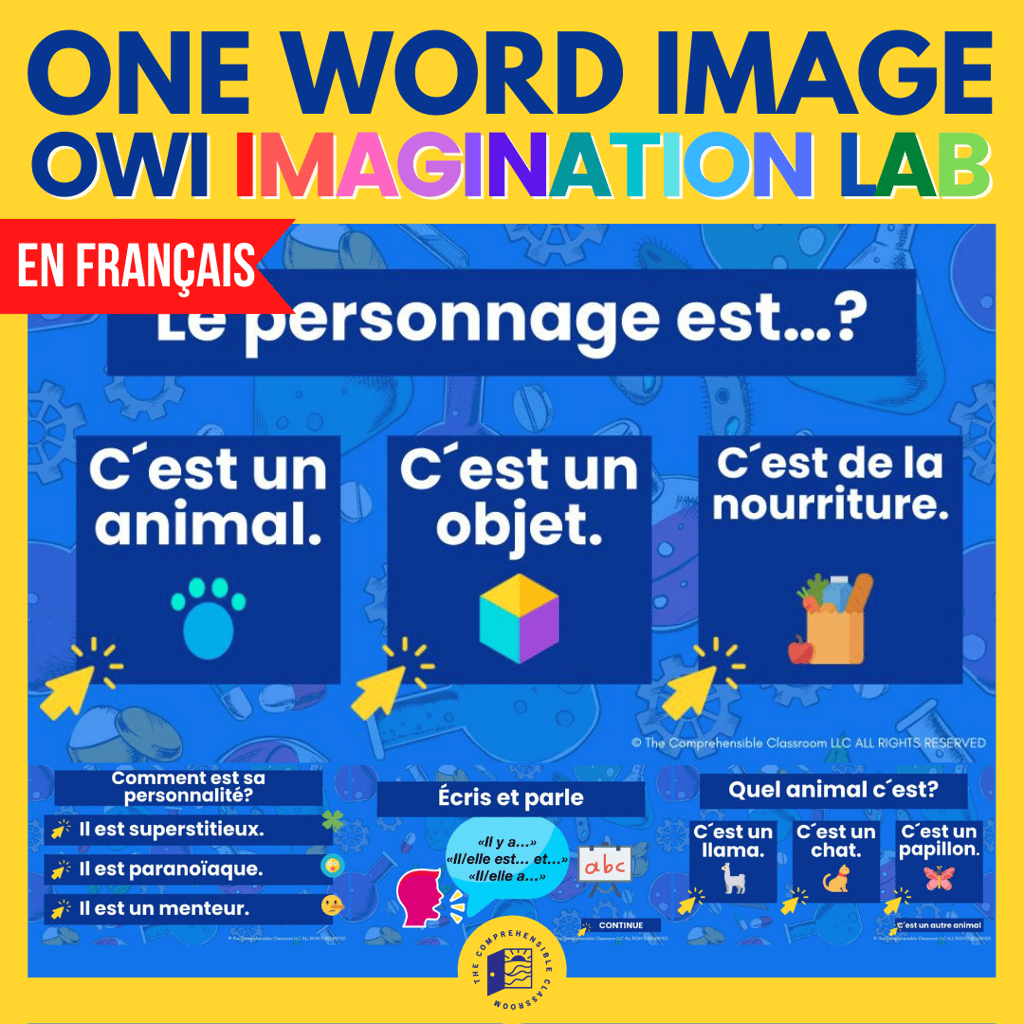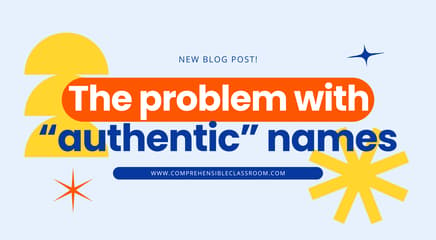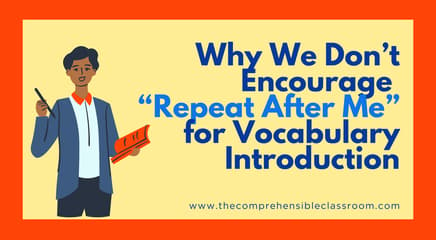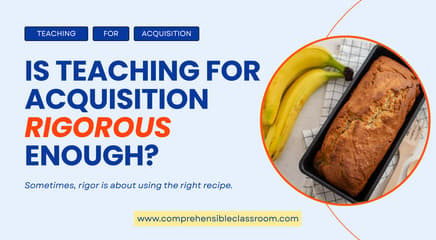Kristin Dahl recently modeled for us a One Word Image at our First Fridays PLC. Kristin learned it from Ben Slavic, who has blogged about it quite a bit. A One Word Image is a version of TPRS, and the teacher uses all of the same techniques. However, it is more about the character than the story.
Choose a One Word Image type
Just like you would do with storyasking, begin the process of creating a One Word Image by letting your class know that you are going to work together and use your imaginations to come up with a character. Let them know that the character can be anything, like a food or a piece of furniture or... anything!
Then, ask the class your first question. Begin by deciding WHAT you want the character to be. An inanimate object is best, but animals and creatures work well too. Typically One Word Image characters are not people.
Create a space for your character
One thing that Kristin did (I believe learned from Ben) was to set aside a physical space in which the character existed. She placed a chair in the middle of the room, and our imaginary character was on top of the chair. As she talked about the One Word Image, she gestured to and around the space above the chair.
Describe your One Word Image
Once you've settled on a One Word Image type, it's time to describe it! Ask questions to have your students come up with a description–very detailed and probably a little bizarre–of the character. Is it big or small? Gigantic or teeny tiny? How many eyes does it have? What color is it? Is it polka dotted or pin striped?
Build a story for your character
With a solid description, start building a story. What problem does your character have? What does your character do? Why?
Our first one word image
Our first One Word Image was Supervaca. She is a crime-fighting cow that squirts flaming hot sauce out of her teats! We had so much fun with Supervaca that now she makes appearances in our stories, and one of my students even sculpted me a little Supervaca in art class!!
One Word Image, 10 years later
Update: It's been many years since I wrote this blog post about Kristin's One Word Image, and the strategy is now used by teachers everywhere! Tina Hargaden joined Ben Slavic to train teachers in OWI and other strategies, and you can find many videos of her demonstrating how to create a One Word Image:
Character creator Imagination Lab
After watching Cécile Lainé demonstrate an OWI at iFLT 2019 in St. Petersburg, Florida, I was inspired to create an interactive presentation that walks teachers through the process of creating an OWI. Instead of asking open-ended questions to the teachers in her demonstration group, Cécile offered them a set of options for each choice: for example, do they want it to be a cucumber, a dog, or a book?
The OWI Imagination Lab presentation is the perfect tool for teachers that are interested in creating a One Word Image (OWI) with their students but intimidated by the process. The OWI Imagination Lab is an interactive Google Slides presentation that is designed to be used in class with your students. The slideshow walks you through the creation of an OWI character (a food, an object, or an animal). Each slide presents a new detail to add to the character's description, along with several options. For example:
- SIZE: Is it big? Small? How big? How small?
- PERSONALITY: Is it nice? Mean? Solitary? Sociable?
- BODY PARTS: Does it have legs? Arms? Eyes? How many?
- COLOR
- SECRETS
- TALENTS
- FEARS
- PROBLEMS
- ...and more!
The OWI Imagination Lab is designed to support teachers in learning how to create a One Word Image (OWI) with their classes. Once you have used it several times to create OWIs with your students, my hope is that you will feel confident enough to guide your students through the creation of an OWI without the support of the presentation.
Spanish Imagination Labs
I have created TWO different presentations that you can use to create characters with your students in Spanish. Each one can be used many times to create many different characters, and no two characters will be the same!
Click the images to access the resource:







